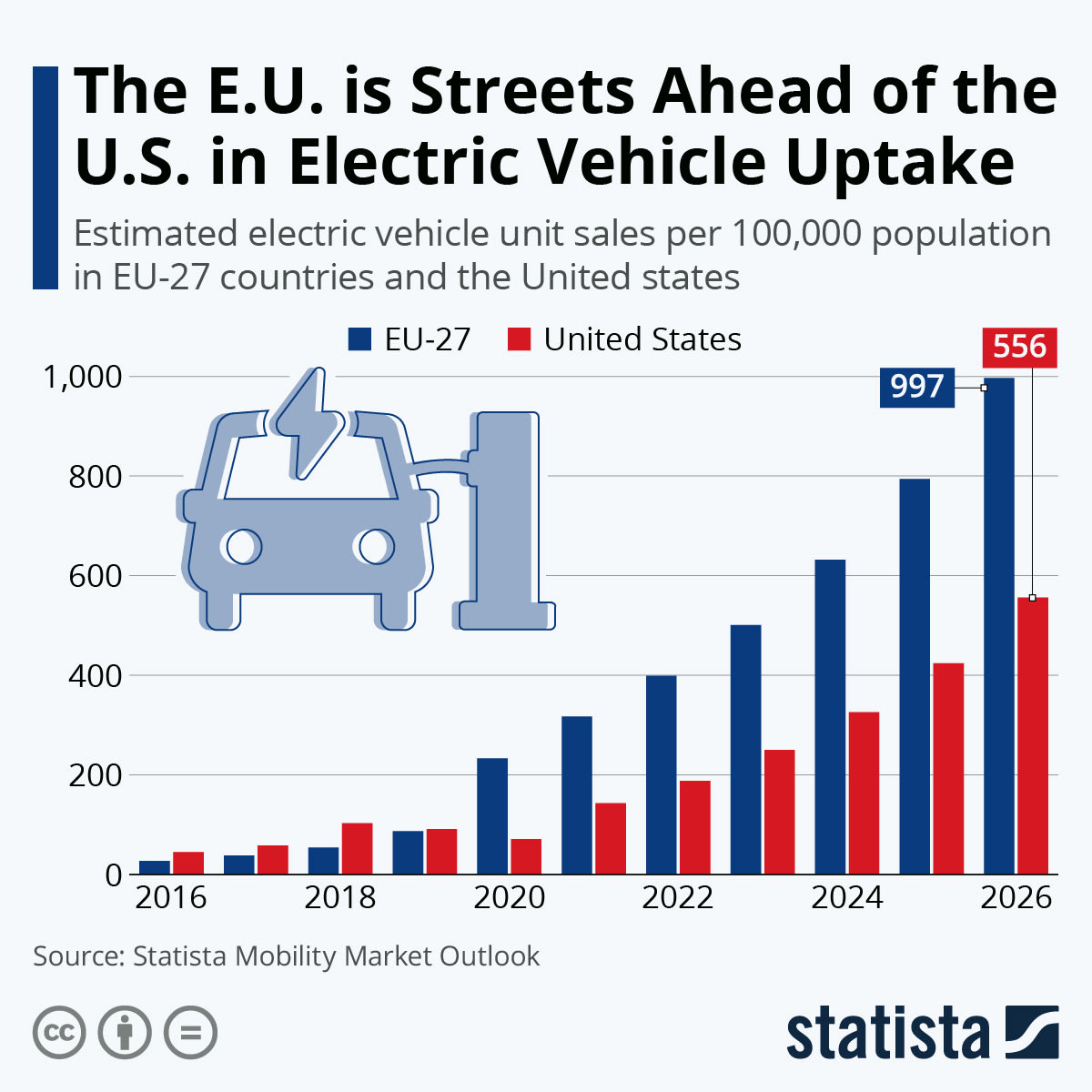Electric Vehicle Adoption in Europe: A Comprehensive Analysis
The global transition towards sustainable transportation is gaining momentum, and electric vehicles (EVs) are at the forefront of this transformative shift. In Europe, several countries have emerged as leaders in EV adoption, driven by a combination of government incentives, environmental concerns, and advancements in technology. This comprehensive article analyzes the EV landscape in Europe, examining the countries with the highest rates of EV penetration and exploring the factors contributing to their success.

Top European Countries for Electric Vehicle Adoption
Based on data from the European Automobile Manufacturers' Association (ACEA), the following countries have the highest share of EVs in their new car registrations as of March 2023:

1. Norway: Leading the pack with an astounding 84.7% of new cars sold in 2022 being electric.
2. Sweden: Following closely with 52.1% of new car sales being EVs.
3. Netherlands: Impressively high at 40.3% EV market share.
4. Denmark: Achieving 35.2% EV penetration in new car registrations.

5. Finland: Rounding out the top five with 33.4% of new cars being electric.
Key Drivers of EV Adoption in Europe
Several factors have played a significant role in accelerating EV adoption in these European countries:
1. Government Incentives: Governments have implemented various financial incentives to make EVs more affordable for consumers. These include purchase subsidies, tax breaks, and free or reduced-cost parking.
2. Charging Infrastructure: The availability of a reliable and accessible charging network is crucial for EV uptake. These countries have invested heavily in public charging stations, making it convenient for EV owners to charge their vehicles.
3. Environmental Concerns: Growing awareness about the negative environmental impact of traditional fuel-powered vehicles has fueled the demand for EVs, which produce zero tailpipe emissions.
4. Technological Advancements: Improvements in battery technology have increased the range and efficiency of EVs, making them more practical for daily use.
Case Study: Norway
Norway stands as a prime example of successful EV adoption in Europe. Several factors have contributed to its remarkable success:
* Early Adoption: Norway was an early adopter of EVs, introducing financial incentives and infrastructure development programs in the 1990s.
* Strong Government Support: The Norwegian government has provided generous purchase subsidies and tax exemptions for EVs, making them more affordable than gasoline-powered vehicles.
* Comprehensive Charging Network: Norway has one of the most extensive public charging networks in the world, with over 10,000 charging stations nationwide.
* Environmental Awareness: Norwegians are highly environmentally conscious, and EVs align with the country's goal of becoming carbon neutral by 2050.
Other Notable European Countries
Beyond the top five, other European countries are also making significant strides in EV adoption. For instance:
* United Kingdom: The UK has set ambitious targets to phase out the sale of new gasoline and diesel vehicles by 2030.
* Germany: Germany's automotive industry is a major player in EV development and manufacturing.
* France: France has implemented a scrappage scheme to encourage the replacement of older vehicles with EVs.
Outlook for the Future
The future of EV adoption in Europe looks bright. Governments continue to support the transition through incentives and infrastructure investments. Technological advancements are expected to further improve the performance and affordability of EVs. Additionally, growing environmental awareness among consumers is likely to drive continued demand for electric vehicles.
Europe is at the forefront of the global transition towards sustainable transportation, with several countries leading the way in EV adoption. Norway, Sweden, the Netherlands, Denmark, and Finland have achieved remarkable success in this area due to a combination of government incentives, environmental concerns, and advancements in technology. As other European countries follow suit and the technology continues to develop, the future of transportation in Europe is increasingly electric.
